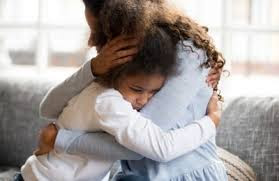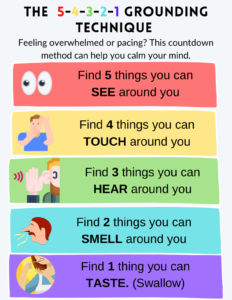How to Help Your Child Regulate Their Emotions

In the first three years of a child’s life, their brain goes through a growth spurt and builds millions of new neural connections, all wiring together to develop how they will interact and respond socially and emotionally. This is learned through modeling the closest people to us in that time, who are typically our parents. It’s a big responsibility parents have, to teach their baby or toddler how to respond rather than react in a situation and it’s highly dependent on how the parent responds rather than reacts to that child. What do I mean by this? Have you ever tried to tell a child to just “stop crying” or even “it’s ok”, and it doesn’t seem to work? Well, that may be because a key ingredient is missing, which is co-regulation.
What is co-regulation? Simply put, it is when one is able to self-regulate, or manage their distress, through the process of interacting with another. A caregiver and child are co-regulators and so a child’s ability to self-regulate and soothe themselves is highly dependent on the caregiver to be self-regulated themselves, provide a safe and warm response and environment, offer a calming presence and tone of voice, and support the child during this time of distress in order to model how to self-soothe. In early childhood, infants don’t have the capacity to soothe themselves and so it’s up to the parents or caregivers to help them develop this ability. So, how do you do this? Well, this is not something you teach through verbal explanation, but rather through your own emotional and physiological state and responses.
Before we are able to attend to our child and co-regulate in order to help them develop this ability, we need to make sure that YOU are self-regulated first. This means noticing your own emotional and physiological state. Are you keyed up? Feeling frustrated? Stressed? Feeling ‘all over the place’? The most important step is managing your own distress first because then you are not in a state to model self-regulation when you are dysregulated yourself and will find difficulty in helping your child to manage their own distress.
Here are some ways you can do this in the moment if you are not feeling calm, present, or able to ‘handle’ the child’s emotional state:
Once you feel like you are present and able to attend to your child, follow these steps to help them move through their emotion instead of repressing it or shutting down:
1. Validate their emotion or experience. This may sound like, “I see you got upset about that” or “You didn’t like that that happened” or “It’s ok to cry” or “That was really important to you”
2. Normalize what they’re feeling or going through. This may sound like, “It makes sense you got angry when that happened”
3. Offer Support If the child seems to be coming out of their distress, you can offer choices of ways to support them. This may sound like, “What would help you right now?” or “Do you want to hold my hand while we walk to the school bus?” or “Let’s go / do [X an activity they like]”
The best thing you can do for your teen is be there for them, however they need you to be.

About the Author:
Simona Bixon. She is an intern at The Heart Leaf Center working towards her Masters in Clinical Mental Health Counseling at George Washington University.
